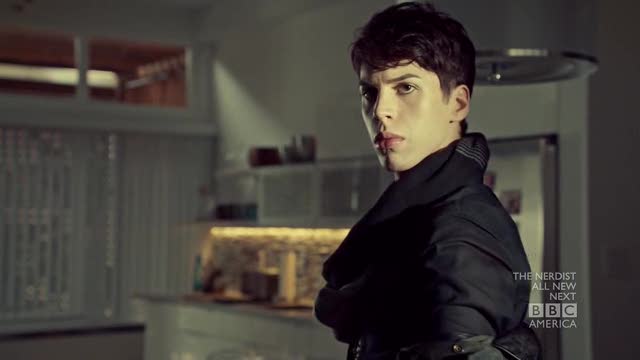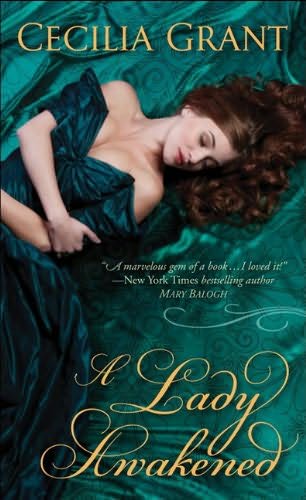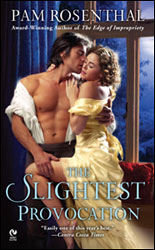Ever since the moment, many decades ago, when my mom introduced me to Little Women, it’s been my pleasure to return the favor whenever I can. Sadly, the opportunities are rare, given what an informed and energetic follower of excellent midlist literary fiction Mom is. Zipping through The English Patient or People of the Book years before I get around to it, she waits patiently, reading list in hand, while I meander through Proust or Pynchon, linger in fiction’s demimondes, reading romance and erotica and writing my own.
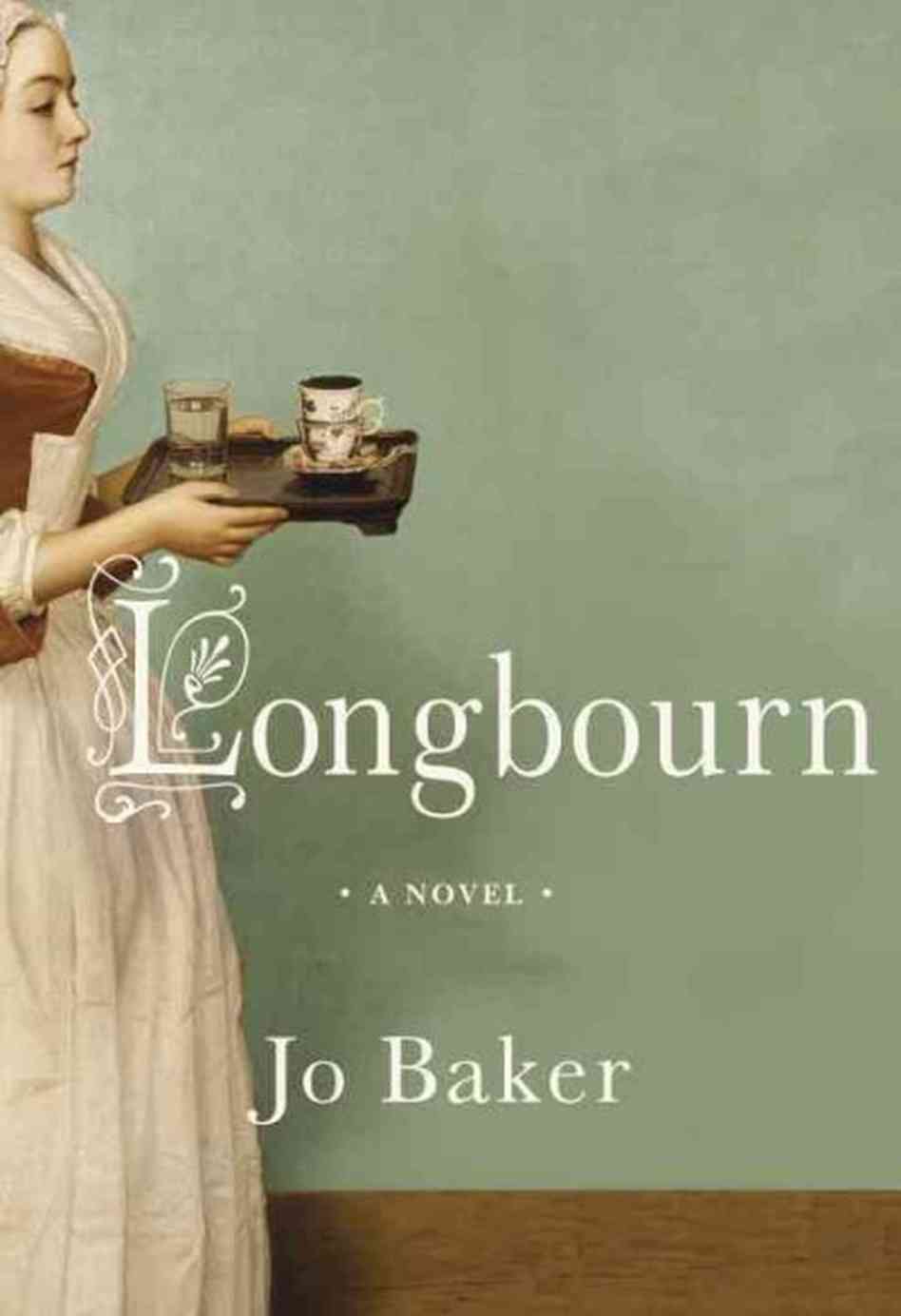 So it’s a special joy when we find common ground in a book of my choosing, as we did when I visited her recently, bearing a birthday present. The gift was a copy of Longbourn, Jo Baker’s stunning retelling of Pride and Prejudice from the point of view of its household servants. I also had it on my Kindle, so we settled happily at her kitchen table to read it together.
So it’s a special joy when we find common ground in a book of my choosing, as we did when I visited her recently, bearing a birthday present. The gift was a copy of Longbourn, Jo Baker’s stunning retelling of Pride and Prejudice from the point of view of its household servants. I also had it on my Kindle, so we settled happily at her kitchen table to read it together.
But as Mom turned pages and I flicked at my screen, we each were seized with palpable concern that things might not end happily for James the footman (“he’s so nice,” Mom sighed) and Sarah the housemaid.
Concern grew into anxiety. Were it not for the other’s presence, we each might have sneaked an illegitimate glance at the last page for reassurance. We were reading Longbourn the way Martin Amis remembers first reading Pride and Prejudice: “I… read twenty pages and then besieged my stepmother’s study until she told me what I needed to know. I needed to know that Darcy married Elizabeth… as badly as I had ever needed anything.” We read like the “Smithton women,” the sampling of readers Janice Radway interviewed in Reading the Romance, tearing through their most cherished recreational reading. Animated by our lust for a happy ending, Mom and I were reading like romance readers, even if the novel in question was one clearly marketed as literary fiction.
.
And why not? Lots of mystery and horror, spy and crime fiction titles have lit fic cred bestowed upon them even as they’re appreciated for their characteristic genre frissons. Stephen King is regularly celebrated in The New York Times Book Review while remaining our supreme magus of high creepiness. Why shouldn’t a literary novel be read for romance’s particular pleasures? Longbourn – already justly recognized for its handsome writing and clever, deeply informed take on Austen’s fiction and Georgian England – ought also be praised for what it shares with my shelf of books all named something like To Love a Duke: the ache and throb and richness of yearning for a happy-ever-after ending.
Before taking on the romance novel or Longbourn’s complicated genre provenance, though, we should remember what a vexed and fluid thing “genre” actually is. Situated at the intersection of marketing categories, reader interaction, academic turf wars, and who knows what else, genres bump up against or devour each other. Like the glowing spheres in my time-waster computer game, Osmos, they emit gravitational fields, travel in orbits, clash, collide or piggy-back on each other.
You can read Longbourn as literary or historical fiction. Mom had been wanting to read it as “the Upstairs/Downstairs Pride and Prejudice,” and you can certainly read it as Austenlandia, which category probably had the most to do with its “set[ting] the British publishing market on fire… when it went on auction.”
Loving the book as I did, I think I read it in all of the above genre categories as well as a romance novel. In fact, a big part of the pleasure I took in Longbourn was not that it transcended genre but that it seemed to participate in so many of them. Part of the adventure was negotiating the category clash. And let’s not forget Baker’s own account of how she’d classify her book:
I think of Longbourn — if this is not too much of an aspiration — as being in the same tradition as Wide Sargasso Sea or Rosencrantz and Guildenstern Are Dead. It’s a book that engages with Austen’s novel in a similar way to Jean Rhys’s response to Jane Eyre and Tom Stoppard’s to Hamlet. I found something in the existing text that niggled me, that felt unresolved…. [having] to do with being a lifelong fan of Austen’s work, but knowing that recent ancestors of mine had been in service. I loved her work, but I didn’t quite belong in it…
Is there a name for this literary tradition (that also, notably, includes Geraldine Brooks’ Pulitzer Prize-winning March)? I usually wind up calling them “no-I’m-not-Prince-Hamlet books,” but surely we can do better. “New Historical” fiction? No, that’s too academic (though it does recognize the wealth and depth of Baker’s historical spadework). I’m open to suggestions.
Baker isn’t the only reader who’s been niggled by a well-beloved text. How many of us do belong in the worlds we love to read about? “Caesar beat the Gauls,” Brecht said. “Did he not even have a cook with him?” In fiction as well as history, we identify with the principle actors, those whose names have survived. How do we make room in a text for the selves the text turns a blind eye to? (And how to keep that Brechtian PC hectoring tone out of our voices?)
A brilliant English professor I know once assigned a class of undergraduates to write about the servants in Pride and Prejudice. “And if you ask what servants –” I’m told she added – “read the book again.” But Austen makes so few direct mentions of servants that even after a careful rereading, they’re hard to spot. By my search of Pride and Prejudice’s digitized text, we read three times of a Mrs. Hill; once of “the two housemaids”; once each of a butler and a footman. Yet meals are cooked and served; messages delivered; somebody has to drive the carriage to this or that social event. Shoe-roses for the Netherfield ball are fetched in the pouring rain “by proxy”.
As in the New Testament, you know these servants by their works. “When a meal is served in Pride and Prejudice,” Baker tells us in an afterword, “it has been prepared in Longbourn. When the Bennet girls enter a ball in Austen’s novel, they leave the carriage waiting in this one.” Downstairs events are mapped upon the satisfaction of upstairs needs in Austen’s text.
And so Longbourn begins on a washday, before dawn in the village of the same name, of which (Jane Austen tells us) the Bennets “were the principal inhabitants.” The acres of fluttering muslin we’ve come to love on our PBS screens are shoved into washtubs: just think how much fabric must be washed, ironed, and hung out to dry in order to clothe a Georgian gentleman’s wife and five daughters for a week. Add that gentleman’s shirts, stockings, and high white cravats (stiffened with rice starch, Baker tells us), the sheets, pillowslips, napkins – and the servants’ underwear as well. It’s no wonder that the washing begins at four thirty, when the pump still painfully cold to the touch, especially for Sarah, the older of the two housemaids, whose hands are afflicted with chilblains.
I think Jane Eyre had chilblains, or some of the children at Lowood did; I once wrote a romance hero who almost gets them when he forgets his gloves. But I was never moved to look it up before now, when I learned from Wikipedia that exposure to cold and humidity “damages capillary beds in the skin, which in turn can cause redness, itching, blisters, and inflammation.”
That the malady can be cured in seven to fourteen days doesn’t help a housemaid bound to the wheel of weekly laundry. Add insult to injury when that same housemaid is obliged to scrub away three inches of mud caked onto Lizzy Bennet’s petticoat. In the opening scene of Longbourn, physical hardship reflects and amplifies emotional travail. Generously taking the lion’s share of the washing (the younger housemaid’s still a child), Sarah’s nonetheless as angry as any lively twenty-something would be, not merely at the discomfort but the invisibility of her situation. Chafed by cold and damp, she seethes with what James will describe as a “ferocious need for notice, an insistence that she be taken fully into account.” The irony is that as she scrubs away the mud from Lizzy’s petticoat, Sarah is stealing our attention from one of literature’s most beloved literary characters and her charming, hoydenish, country walks. Though we begin our reading eager to learn more about the Bennets (and though we do), Longbourn’s stealth dynamic is to make Sarah’s story the one we care about.
It’s a serious perspective jolt, and in more ways than one. I was more than a little discombobulated, for example, to realize that from Sarah’s angle of vision, there’s not such a wide distance between Lizzy and Lydia. Jane Austen appraised her characters according to an unsparing, Olympian ethical calculus, but the view from below stairs is more utilitarian. Because cook and housekeeper Mrs. Hill is worried about keeping her job after Mr. Bennet dies, shy, awkward Mr. Collins is besieged with cake and cosseting. For Sarah, alive with her developing sexuality, the Bennet girls constitute a sort of ladies’ magazine, a compendium of competing styles of female attractiveness; it’s here (rather than as a moral actor) that Lizzy wins hands down.
“Bright-eyed and quick and lovely… always ready with a what-do-you-call-‘em, a “witticism”: Sarah ponders Lizzy’s example as she plots how to attract the interesting new footman’s attention. “Natural manners were always considered the best,” she concludes, having “heard Miss Elizabeth say so.”
That “natural” manners are matters of laborious construction, is, of course, another irony, applied by Baker with Austen-esque subtlety. Since Georgian “naturalness” took some resources to pull off, sadly, Sarah’s “natural” greeting falls through. Meanwhile, James has his own reasons for staying aloof. Which situation not only drove Mom and me into a frenzy of reading to find out what could be keeping him from loving Sarah as much as we did, but which caused us to agree, a few chapters in, that this wasn’t an “Upstairs/Downstairs” book after all.
For while an “Upstairs/Downstairs” production like Downton Abbey purports to set two classes in satirical opposition, Upstairs is typically afforded primacy. For every Downton dressing-table vignette – Lady Mary’s charming, rueful bitchiness in the mirror of Anna’s elegant decency – there’s a view of Lady Mary through the adoring eyes of that butler guy with the eyebrows. In Longbourn’s dressing-table scenes, on the other hand, Sarah’s too distracted (both by work and her body’s demands) to pay more than dutiful attention to Lizzy.
And yet Elizabeth Bennet’s story remains a serious and important one, and a pillar upon which Longbourn is constructed. In her study, A Natural History of the Romance Novel, Pamela Regis has called Pride and Prejudice “the best romance novel ever written”. The right of a woman to choose a mate for love instead of material convenience is its great theme, Austen’s complicated take on the issue one of her great legacies. Unsentimentally engaging the limits of the possible, she created memorable loveless marriages as well as unforgettable happy ones. Even among the gentry, Charlotte Lucas doesn’t have the resources to hold out for the kind of love she knows she’s unlikely to get.
Will Sarah also settle for second best, we wonder – the question complicated by the fact that her second best, the Bingley family’s half-black footman, is a much more attractive alternative than Mr. Collins. In a deft stroke, Baker has the Bingley money coming from the West Indies, like the Bertrams’ in Mansfield Park. Bearing his master’s name, the freed slave Ptolemy Bingley might be Charles’s half-brother. In any case, Sarah could do a lot worse than this wonderfully named character. Tol is smart, sympathetic, quietly damaged, drop-dead gorgeous, in love with Sarah, and a glamorous reminder of a wide world she hungers to see. But he’s not James.
So, once again, Mom and I kept reading, loving the historical savvy, exquisitely layered period detail, and social critique, but still reading for the love story. Or to be more precise, we read it as social critique enlisted in the cause of its heroine’s right to have a love story. A story recuperated from the blank spaces within the best romance novel ever written ought itself to be a romance novel.
If Longbourn genuinely is a romance novel. Which brings us back to those complicated issues of genre, this time having to do with romance fiction.
It’s a noisy, enthusiastic discussion these days, fueled rather than inhibited by feminism. You can pick up on the debates at academic symposia, a peer-moderated journal, a host of blogs, and an energetic and inclusive professional association, Romance Writers of America (RWA). Romance fiction is a multimillion-dollar industry, a site of academic turf-building, and a ongoing sisterhood of remarkable, smart women (If anybody had told me in the radical feminist 1960s….). Encompassing vampire romance, Amish romance, romance for threesomes or same-sex partners: the genre is wildly protean in its themes and variations. Self-published on the web or mass-marketed: the business is pragmatic and wide open to entrepreneurial innovation. And yet (and quite differently from, say, science fiction) all its proponents are pretty much on the same page when it comes to what makes a romance novel a romance novel.
On its web-site RWA insists that the romance genre need a central love story and an emotionally-satisfying and optimistic ending: “In a romance, the lovers who risk and struggle for each other and their relationship are rewarded with emotional justice and unconditional love.” Pamela Regis’s Natural History of the Romance Novel expands upon these themes by identifying eight “narrative events” that must be present: definition of society (“always corrupt, that the romance novel will reform”); the meeting between the heroine and hero; their attraction; the barrier to that attraction; their declaration that they love each other; point of ritual death; recognition that fells the barrier; and betrothal.
Students of the formalist tradition (via Propp, etc.) won’t find much in Regis that’s unfamiliar. But trust me; I’ve been trying to bust her categories for years and they work. Simple, so economical they seem in danger of dissolving into tautology (but somehow don’t), they constitute a remarkably functional and hard-headed set of conditions by which to judge whether a work “of prose fiction” that tells “the story of the courtship and betrothal of one or more heroines” actually counts as a romance novel.
Gone With the Wind, for example, doesn’t make the cut: Scarlet and Rhett’s recognitions of their love for each other, Regis says, are too ill-timed to fell the barrier between them. GWTW readers may tack an imagined mutual recognition and happy ending onto the text (as I still do after multiple screenings of Quentin Tarantino’s Jackie Brown). But imagined elements don’t count, and RWA would doubtless agree. If GWTW were entered in the RITA competition (the organization’s yearly version of the Oscars), it would have to in the category of “Novel with Strong Romantic Elements,” rather than Contemporary, Historical, etc.
In the case of Pride and Prejudice, Regis’s categories are clearly a much better fit: Elizabeth Bennet does survive both her ritual death (Lydia’s disgrace might well have been the death of all the other Bennets’ marriage prospects); and she and Darcy do indeed achieve a timely, barrier-breaking set of recognitions. It was, however, as I was reading Longbourn that I began to wonder about Regis’s first, seemingly anodyne “narrative event”: the definition of society (“always corrupt, that the romance novel will reform”).
Reform, really? No reader could gainsay the importance of Elizabeth Bennet’s right to love and marry Mr. Darcy, but it’s rather a stretch to think their union strikes much of a blow for the “reform” of Georgian society. And in fact, upon picking up Regis this time, I noticed that as she continues her argument, she restates the notion of “reform” quite a bit more softly. “The scene or scenes defining the society establishes the status quo which the heroine and hero must confront in their attempt to court and marry and which by their union, they symbolically remake.”
Right. Symbolically. Northrop Frye says it better in his Anatomy of Criticism when he assigns to the comic/romantic mode the work of re-integrating its characters into their social milieu (in opposition to tragedy, which alienates its suffering protagonist). As a brilliant realist, writing about the times she lived in, Austen doled out rewards and punishments according to the desserts of those times, but so exquisitely and exactly that she erected a romantic ideal on the foundation of the real. What actually happens in the final pages of Pride and Prejudice is a social/moral reordering of the status quo, each character precisely rated according to whether (or how often) they’ll be received at the gates of Pemberley in the years to come.
What then of Longbourn, written from our present purview of an earlier era whose social wrongs are painfully manifest and palpable? Does the love story hold enough primacy over all that historical actuality? Can a book that re-imagines Austen’s story with such keen historical double vision fit into the romance novel genre? Or is it perhaps after all merely a literary/historical/New Historical/ no-I-am-not-Prince-Hamlet/Austenlandia novel with strong romantic elements?
Like Elizabeth Bennet – and like Sarah – I’m still holding out for romance.
Firstly because Longbourn is not only an informed and touching book, it’s a sexy one – not very explicitly, but in a way that accords sex serious and intelligent consideration, along the way of developing both the love relationship and the world around it. I’ve stressed the harrowing details of daily labor below stairs. And believe me, there’s lot’s more where that came from. But in the matter of sex and sexuality I have to disagree with Sarah Wendell, on the pages of her popular romance blog, Smart Bitches Who Love Trashy Books, when she fails to find any “justice or balance of circumstance in the narrative to take the sting out of the reality of the servants’ circumstances.” By my reading, the erotic passages in Longbourn provide, not only a respite from “painful realism,” but a credible, if difficult, road to RWA’s necessary conditions of “emotional justice and unconditional love.”
Not to speak of some lovely, sensual writing: “She was dreamy with her new understanding, lulled with contentment, not thinking beyond the pads of her own fingers, the tip of her tongue.” Yes, there’s serious suffering yet to come; in fact James, who “knew better” than the just-awakened Sarah, thinks of their situation as “a beautiful disaster.” But not thinking beyond the pads of her own fingers? Those same fingers we’ve seen so painfully afflicted with cold and damp? You’ll have to excuse this romance reader for a moment as she shivers with pleasure, and this erotic romance writer as she loses herself in admiration, both for Baker’s writing and her smarts about female sexuality of the period.
Longbourn imagines a credible, if rather sad, erotic innocence for the Bennet girls (at least the ones who aren’t Lydia). A down side of Regency class privilege was certainly its fetishism of female purity. Straining against the limitations of what they ought to be – “smooth and sealed as alabaster statues underneath their clothes” – bored, curious, and adventurous girls of the polite classes might well have become Lydia Bennets while their more proper sisters make do with “uneasy half-suspicion of what men and women might do together, if they were but given the opportunity.”
Of Jane Bennet, moping around the house after the Bingley’s have decamped, Sarah thinks: “Sit and wait and be beautiful, and wan. Sit and wait and be in love. Sit and wait until Mr. Bingley shook off his sisters and returned to claim her. That was how things worked for young ladies like Miss Jane Bennet.” While for people like herself and James, “nobody looked askance at a big belly at the altar, nobody cared so long as it was under plain calico or stuff, and not silk.”
Comparative sexual freedom for the lower classes doesn’t come close to balancing the scales of justice, but it affords some nice compensations. And in the matter of “unconditional love,” I offer a few of the book’s simplest, most gorgeous sentences, from perhaps the book’s darkest moment, when James is gone and Sarah doesn’t know how to find him, and when the kitchen at Longbourn is all abuzz with news of Lizzy’s engagement to Mr. Darcy, with “carriages and the Lord knows what”: “Sarah went back to her work, her jaw tight. She would have been content with so little. She would have been content with just his company.”
And I’d also be pretty deeply content with only that last sentence, if I didn’t have an additional and final argument for Longbourn as a romance novel (and a wonderful one) that’s both like and unlike the one whose gaps it fills.
For if Pride and Prejudice ends its final chapter at the boundaries of Pemberley, Longbourn ends its penultimate chapter in the same place, with Sarah, who’s been lady’s maid to Lizzy, leaving “quietly, unattended, by a servants’ door,” Pemberley standing “silent and self-contained” behind her. Pride and Prejudice revels in its power to create an ideal – even a “reformed” – family within the gates of what it deems a great good place (Wickham never received, nor – as the text hints rather than comes right out and says – Mrs. Bennet either). But at the end of Longbourn, an astonished Mrs. Darcy will also have to do without Sarah, who’s off in search of James.
There would be others out there, on the tramp. There always were, around the time of hiring fairs and quarter days, these great tidal shifts and settlings of servants around the country.
I don’t know much about “these tidal shifts and settlings,” but I do know something about the massive economic uncertainty in England toward the end of the Napoleonic Wars. And I also know that great migrations of the poor take shape during uncertain times. And so it makes sense to me that it’s among nameless, shifting human tides (perhaps – if you want to do a Borges take on it – among the unnamed characters from other novels) that this novel begins to find its just and satisfying resolution. A resolution less perfect, and far less conclusive or secure than that of Pride and Prejudice, but one that creates, if not an ideal family, a redeemed one.
And if I’m giving you something like a peek at the final page – well, that never stopped a romance reader from reading all the way through, just to make sure.
______
Pam Rosenthal’s romance novel The Edge of Impropriety won Romance Writer’s of America’s 2009 RITA Award for Best Historical Romance, and Playboy called her erotic novel, Carrie’s Story (w/a Molly Weatherfield), “one of the 25 sexiest novels ever written.” Her website is http://pamrosenthal.com
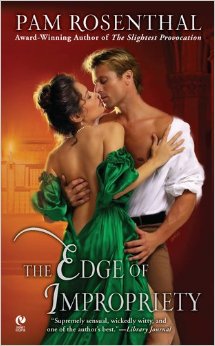 At the end of Pam Rosenthal’s 2008 regency romance novel The Edge of Impropriety, we learn offhand that Lady Isobel Wyatt and Miss Amory, two wealthy young women who had been seeking husbands during the season, have “determined to live together as companions and had set themselves up in a Welsh cottage.” The information is about minor characters, and is dropped casually — too casually, in fact. Rosenthal is telling us that Wyatt and Amory are lesbians, and in doing so, she rewrites, or reinterprets, every scene in which the characters appeared. When Miss Amory, the American heiress, watched eligible bachelor Anthony courting Wyatt, she was jealous — but the jealousy, we now realize, was because she was in love with Wyatt, not with Anthony. When we overhear Wyatt telling Amory that she has turned down Anthony’s proposal and is truly happy for the first time in her life, that happiness, on rereading, is not just because of a loveless marriage avoided — it’s because of a loving companionship embraced. Wyatt and Amory are treated throughout the novel as a kind of side plot; they are edges of Anthony’s love triangle. But then, at the end, we find that triangle was concealing another, and that the two women have their own hidden story, if you know how to look for it.
At the end of Pam Rosenthal’s 2008 regency romance novel The Edge of Impropriety, we learn offhand that Lady Isobel Wyatt and Miss Amory, two wealthy young women who had been seeking husbands during the season, have “determined to live together as companions and had set themselves up in a Welsh cottage.” The information is about minor characters, and is dropped casually — too casually, in fact. Rosenthal is telling us that Wyatt and Amory are lesbians, and in doing so, she rewrites, or reinterprets, every scene in which the characters appeared. When Miss Amory, the American heiress, watched eligible bachelor Anthony courting Wyatt, she was jealous — but the jealousy, we now realize, was because she was in love with Wyatt, not with Anthony. When we overhear Wyatt telling Amory that she has turned down Anthony’s proposal and is truly happy for the first time in her life, that happiness, on rereading, is not just because of a loveless marriage avoided — it’s because of a loving companionship embraced. Wyatt and Amory are treated throughout the novel as a kind of side plot; they are edges of Anthony’s love triangle. But then, at the end, we find that triangle was concealing another, and that the two women have their own hidden story, if you know how to look for it.
